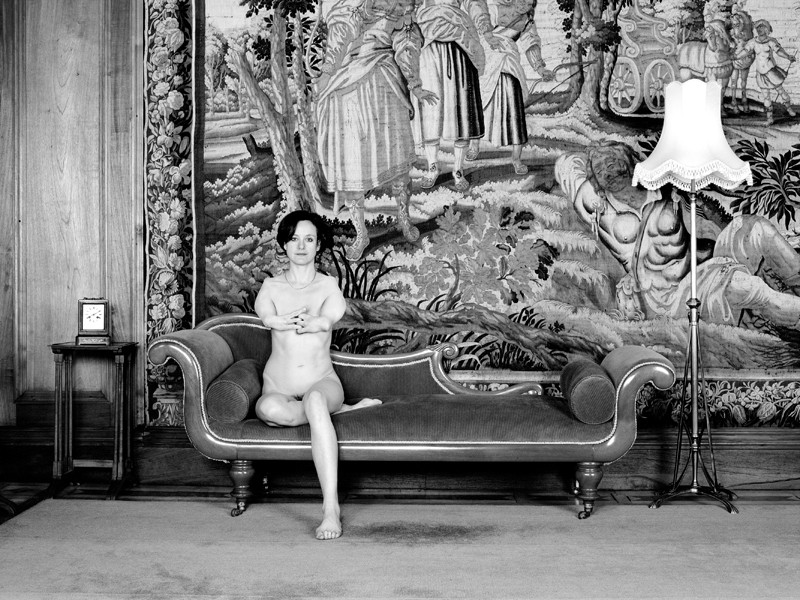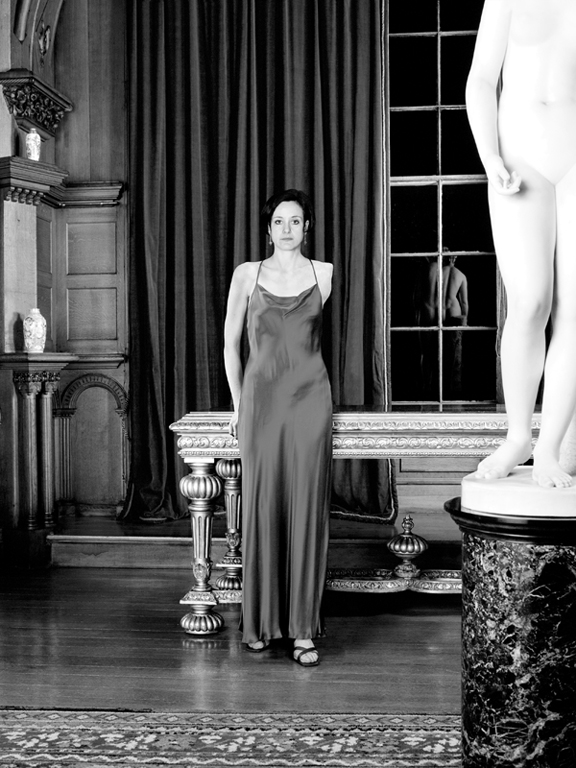[Winter 2000-2001]
par Dayna McLeod
Articule, Montreal
September 9 – October 8, 2000
Projecting the agency of the ego and the power of the image in an age obsessed with identity politics, performative fiction, and digital truth, Alexa Wright reveals disabled versions of herself in her solo exhibition at Articule, I. This series of eight self-portraits has Wright occupying deformed and disfigured bodies; she has achieved this effect by combining her likeness with those of physically disabled people. Looking out from the frame, she maintains a self-confident demeanour that charges the portraits with visible irony and contradiction. Loaded metaphors connect the images, and these distortions allow for interpretations of the multiplicity of the artist. Using posturing techniques employed in the long-winded tradition of self-portraiture, Wright momentarily suspends disbelief of her physical metamorphosis from image to image by confronting the viewer with a constant, stately gaze. This look dismisses disabled stereotypes of weakness, vulnerability, and abject ugliness with cold, clinical detachment and reclaims a position of power not complicated by physical insecurity. This self-possession is further underlined by Wright’s choice of castle-like settings; velvet curtains hanging over large windows, grand high-ceilinged halls, and oak-paneled walls serve as the backdrops for her portraits. Class functions as a mediator between public perceptions of the disabled and the isolated disability by situating Wright as the dominating figure. Not only is this position of élite classism used to contribute to Wright’s performed strength, but it allows Wright to sneak in art history through another door. Female figures portrayed in marble statues, oil paintings, and rich tapestries have been placed in direct proximity to Wright’s selves so that the viewer is able to compare bodies constructed for their visual pleasure: those carved out of marble and those rearranged in PhotoShop.
With no telltale glue seams, conflicting perspectives, or computer-manipulated glitches scarring the images, Wright’s portraits also speak to the questionable authenticity of photographic truth. Representing reality through its manipulation, Wright’s bodies are coated with meaning as thickly as their skins. Her shifting body is able to represent the proof of deformity while expanding the possibilities of representation. The corporal self is rendered in digital technology while representing its own manipulation.
Wright uses “her” body to address the history of the female nude in classical and contemporary art practice. The portrait in which Wright has only one arm, reminiscent of the Venus de Milo, pushes the historical perspective of objectifying the female body by giving Wright a sexual presence. Dressed in a symbolically loaded red satin gown, Wright takes one step forward and bares a seductive gaze. Her sexual availability is further implied both by the marble nude that stands in the foreground, and its backside reflection in the window behind her. Here, Wright re-contextualizes and re-presents the female subject by staging the disabled body as a sexual body while still comparing it to the classical ideal. Far from being disempowering or insinuating victimization, Wright restores a sexual confidence to an identity that the asexual stereotype assumes that it doesn’t possess. By distorting and twisting the “perfect” female form and revealing its imperfections, Wright twists our preconceptions about beauty, persona, and body image. She points out that the female body is even more riddled with politics when disfigured and manipulated.


